- Aug 30
- Sep 07
- Sep 14
- Sep 21
- Sep 27
- Sep 28
- Oct 06
- Oct 12
- Oct 19
- Oct 25
- Oct 26
- Nov 16
- Nov 18
- Nov 29
- Dec 13
- Mar 08
- Mar 22
- Apr 05
- Apr 19
- Apr 26
- May 03
- May 05
Pronghorn Resource Selection in Nebraska’s Agriculturally Dominated Landscape
Main Speaker: Katie Piecora
MS Graduate Student , University of Nebrasks-Lincoln | School of Natural Resources | AWESM Lab
Date: 8/30/2022
Time: 2:00 PM
Location: Zoom Webinar (Check with Andy Little, alittle6@unl.edu for information)
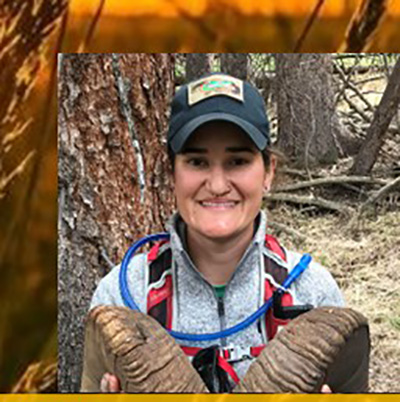
Abstract
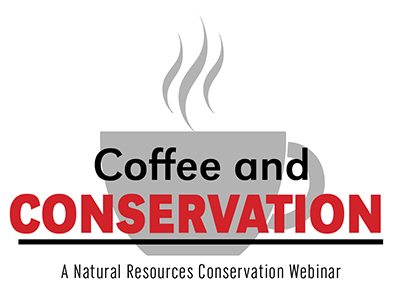
Video
Mountain lion research in California: implications for wildlife conservation and management in the 21st century
Main Speaker: Justin Dellinger
Carnivore Biologist , UC Davis School of Veterinary Medicine | Karen C. Drayer Wildlife Health Center
Date: 9/7/2022
Time: 3:30 PM
Location: 107 South (Auditorium) Hardin Hall
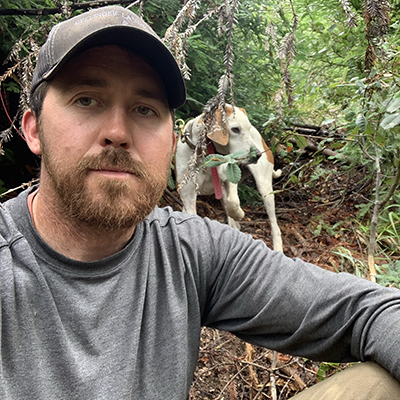
Abstract
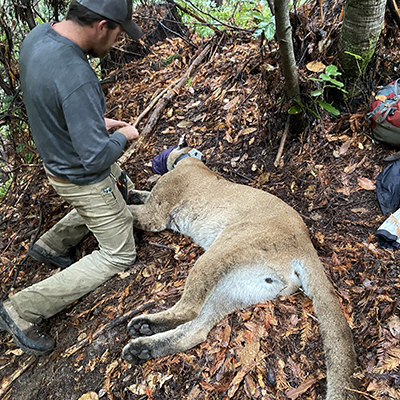
Increasing human populations and expanding development across the globe necessitate progress in monitoring populations and understanding factors limiting population persistence. California has the largest human population of any state and yet half of the state is considered suitable mountain lion habitat. The juxtaposition or intertwining of a large human population, with extensive development, and areas that support large carnivores creates many unique conservation and management challenges. Ensuring viable mountain lion populations exist in such a situation requires an in-depth understanding of multiple aspects of mountain lion ecology as well as mountain lion-human interactions. Aspects of mountain lion genetics, demographics, habitat use and connectivity, and conflict and coexistence will be discussed as well as how these issues relate with one another. This overview will help provide material for thoughtful consideration of topics such as what metrics are sufficient for determining the conservation status of a wildlife population.
Speaker's Bio
I’m originally from western North Carolina and grew up in the Appalachian Mountains. I’ve done research on red wolf ecology and gray wolf-prey interactions as part of MS and PhD. I have also worked as a biologist for different tribes doing large carnivore work. More recently, I worked for CDFW for 6 years, where I was the large carnivore researcher for the state. Now, I work for UC Davis as a large carnivore biologist. On a personal side, my wife Nikki and I have been married 14 years and we have 3 pretty cool kids (Jude – 11; Sadie – 8; and Adah – 5). We’re all still adjusting to California!Speaker's Contact Information
- jadellinger@ucdavis.edu
Video
Why Soils Matter
Main Speaker: Rabi Mohtar
TEES Research Professor , Texas A&M University and American University of Beirut
Date: 9/14/2022
Time: 3:30 PM
Location: 107 South (Auditorium) Hardin Hall
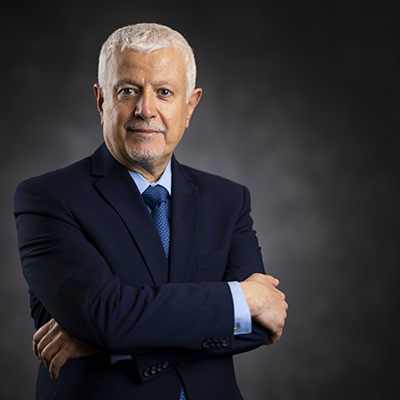
Abstract
The presentation will introduce the global water and food security challenges, the interconnectedness of the water-energy-food-health system and shed light on soils as a key system to achieve water-energy-food-health security. The presentation will discuss applications of the “pedostructure” - a concept based on soil water thermodynamics- to soil and water management including water reuse and the impact of nontraditional irrigation water on soil structural properties using a thermodynamics and accurate characterization of soil/ water dynamics. The quantification of soil water properties such as permanent wilting point and field capacity will lay the foundation for precision irrigation and soil management practices. Concluding remarks will address the future challenges in water and food security and ways in which soil can play a role in those targets.Speaker's Bio
Professor Rabi H. Mohtar, Department of Biological and Agricultural Engineering and the Zachry Department of Civil and Environmental Engineering at Texas A&M University. Mohtar’s research focuses on global resource challenges and the development of a Water-Energy-Food Nexus framework for linking science and policy; on characterizing the soil-water medium using thermodynamic modeling and the efficacy of non-traditional water, and on applications for sustainable integrated water management such as implementation of the Sustainable Development Goals (SDGs). Mohtar serves as a Governor of the World Water Council and is an Executive Board member of the International Water Resources Association (IWRA), a Distinguished Alumnus of the American University of Beirut (AUB), Senior Fellow at the Policy Center for the New South, and a Fellow of the American Society of Agricultural and Biological Engineers. He founded the Texas A&M Water-Energy-Food Nexus Initiative (2015) and served as dean of the Faculty of Agricultural and Food Sciences (2018-2021) at the AUB, where he also established the Water-Energy-Food-Health Nexus Renewable Resources Initiative (WEFRAH). While at Purdue University (1996-2014), Mohtar was the inaugural director of Purdue’s Global Engineering Programs (2008) and a founding member of Purdue’s Division of Environmental and Ecological Engineering (2006). In 2011, he founded the Qatar Environment and Energy Research Institute. Throughout his career, Mohtar has received a number of awards. Most recently, he received the PRIMA WEFE Nexus award and was honored at the American Chemical Society Division of Environmental Chemistry Symposium. He received the 2010 Kishida International award and was inducted as an ASABE Fellow in 2018.Speaker's Contact Information
- Rabi.Mohtar@ag.tamu.edu
Video
Apologies
Reproductive Conservation: Top 10 Ways to Improve Breeding Success
Main Speaker: Kari Morfeld
Reproductive Physiologist &: Endocrinologist , Physiology Consulting Services
Date: 9/21/2022
Time: 3:30 PM
Location: Zoom Only
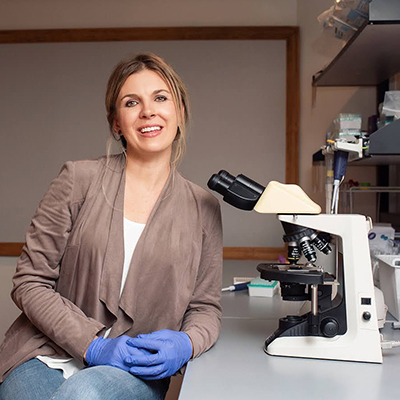
Abstract
Apologies
Speaker's Bio
Dr. Morfeld is a reproductive physiologist and endocrinologist based in Omaha, Nebraska. She is the founder and president of the non-profit organization, For Elephants Inc., and founder and CEO of Morfeld Research and Conservation, LLC. She serves numerous zoos, the private sector, and several government and conservation organizations through wildlife reproductive services and research. Dr. Morfeld mentors undergraduate and graduate students by providing unique opportunities in conservation and research in the US and through her elephant field program based in South Africa. Dr. Morfeld received her B.A. in Biology from Nebraska Wesleyan University and M.S. in Animal Science from University of Nebraska, Lincoln. For her dissertation, Dr. Morfeld studied body condition in zoo-managed African elephants with a concentration on the reproductive and metabolic health implications of poor body condition at George Mason University. Dr. Morfeld currently serves as the Chair for the AZA Reproduction and Endocrinology Scientific Advisory Group. Although the primary focus of Dr. Morfeld's research has historically been on African elephants, her organization currently monitors the well-being of a diverse number of species including giraffes, polar bears, dolphins, penguins, capybaras, chimpanzees, rhinoceros, European fallow deer, eland, bongos, water buffalo, and many more!Communicating Precision Agriculture from a Conservation Specialist Perspective
Main Speaker: Morgan Register
R3 Hunting and Shooting Coordinator , The National Wild Turkey Federation
Date: 9/27/2022
Time: 2:00 PM
Location: Zoom Webinar (Check with Andy Little, alittle6@unl.edu for information)

Abstract

Video
Field Guide to a Hybrid Landscape: Deconstructing Nebraska's Hand-Planted Forest
Main Speaker: Dana Fritz
Hixson-Lied Professor of Art , UNL | School of Art, Art History & Design
Date: 9/28/2022
Time: 3:30 PM
Location: 107 South (Auditorium) Hardin Hall
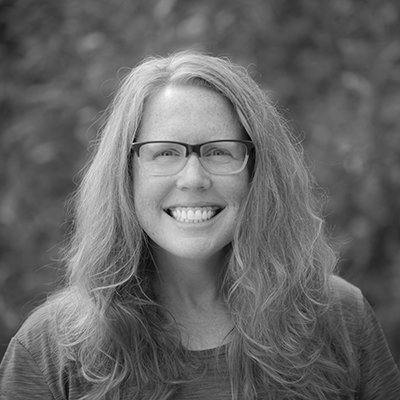
Abstract
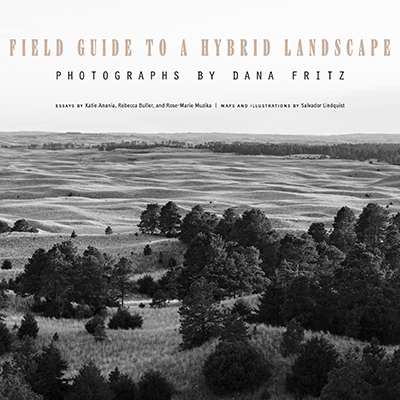
Dana Fritz will share photographs from her new book and exhibition, Field Guide to a Hybrid Landscape. Over five years she visited, photographed, and researched the forest and tree nursery as well as the history and ideas that drove what was once the world's largest hand-planted forest. This fascinating and little-known story is especially relevant to our current challenges with climate chaos and biodiversity collapse.
Speaker's Bio
Dana Fritz, Hixson-Lied Professor of Art at University of Nebraska-Lincoln, uses photography to investigate the ways we shape and represent the natural world in cultivated and constructed landscapes. Her work has been exhibited, published, and collected internationally. She is the author of Terraria Gigantica: The World under Glass (University of New Mexico Press, 2017) and Field Guide to a Hybrid Landscape (forthcoming from University of Nebraska Press in January 2023.) Coinciding with this book is an exhibition of her photographs from Nebraska's hand-planted forest at UNL's Great Plains Art Museum September 2, 2022 - March 11, 2023. Departmental Link
Social Media
Instagram: @danafritzphoto Facebook: https://www.facebook.com/danafritzphotography #fieldguidetoahybridlandscape #nebraskanationalforest #handplantedforest @unlart @unlarts @unlphoto @univnebpress @greatplains.unl
Speaker's Contact Information
- dana.fritz@unl.du
Video
Apologies
Climate, Climate Change and Big Weather: How are they related and how do we know?
Main Speaker: Deke Arndt
Chief , Climate Science & Services Division | National Centers for Environmental Information
Date: 10/6/2022
Time: 3:30 PM
Location: 107 South (Auditorium) Hardin Hall
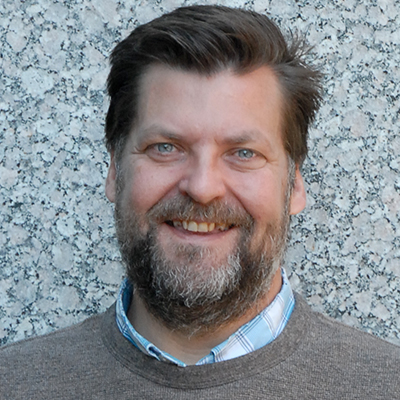
Abstract
We have spent many generations learning how to work within our climate. From the crops we grow, to the types of houses we build, to how big we make our drainage structures. But climate is changing and this is introducing new challenges as today's climate replaced the one we knew a generation ago, and the next generation will know a slightly different one, too. What does that mean for big weather? Weather extremes? What are the things we need to understand about our changing world, and what may be some of the opportunities in a new climate? And how do we really know it's changing, anyway? Deke Arndt from the National Centers for Environmental Information will go over some of the data behind our understanding of climate change, and latest findings from the State of the Climate report and the National Climate Assessment, both of which are produced at NCEI.
This is a joint seminar with Department of Earth and Atmospheric Sciences.
Speaker's Bio
Deke Arndt is the Chief of the Climatic Science & Services Division at NOAA's National Centers for Environmental Information (NCEI) in Asheville, NC. The Division takes in historical weather, climate and paleoclimate observations from NOAA and around the world, and transforms them into data, products, analyses, and services used by partners, scientists and decision-makers across public and private sectors. Mr. Arndt previously headed NCEI's Climate Monitoring team, which tracks the climate system through regular expert analyses of parts of the U.S. and global climate system, informed by indicators developed at NCEI or partners. Mr. Arndt was recently the co-chair of the U.S. Global Change Research Program Indicators Interagency Working Group, and currently serves on the Council of the American Meteorological Society. Prior to NOAA, he held several positions at the Oklahoma Climatological Survey. He is a graduate of the University of Oklahoma’s School of Meteorology.Video
Seeing the unseen: How airborne imaging spectroscopy and fluorometry reveal the secrets of plants from the air
Main Speaker: Ran Wang
Image Processing Specialist, Research Assistant Professor , School of Natural Resources | University of Nebraska-Lincoln
Date: 10/12/2022
Time: 3:30 PM
Location: 107 South (Auditorium) Hardin Hall
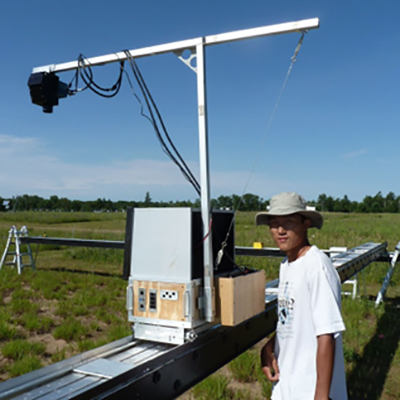
Abstract
Hyperspectral airborne imagery can provide rich information on plant physiological and structural properties at a scale intermediate to that of proximal and satellite remote sensing and has broad applications in assessing ecosystem function and biodiversity. Built on the decades-long history of airborne imaging spectroscopy at CALMIT, we developed the Nebraska Earth Observatory (NEO), which includes a hyperspectral imaging spectrometer and an ultraspectral imaging spectrometer. These cutting-edge technologies enable us to monitor plant photosynthesis, biodiversity, and ecosystem function across Nebraskan croplands, grasslands, and forests. Combining the hyperspectral and fluorescence image cubes with ground measurements, we are able to reveal plant secrets such as photosynthetic properties at different spatial and temporal scales from the air.Speaker's Bio
Ran Wang conducts research on monitoring plant biodiversity and photosynthesis characteristics using multiscale remote sensing, ranging from proximal, airborne and satellite. He is currently working at the airborne research program (Nebraska Earth Observatory, NEO) at CALMIT, SNR to explore the applications of airborne imaging spectrometry and solar induced fluorescence in assessing plant diversity, vegetation health and ecosystem function.Speaker's Contact Information
- rwang22@unl.edu
Video
Envisioning a treed trajectory for agriculture – findings from agroforestry research
Main Speaker: Lord Ameyaw
Assistant Professor , School of Natural Resources | University of Nebraska-Lincoln
Date: 10/19/2022
Time: 3:30 PM
Location: 107 South (Auditorium) Hardin Hall

Abstract
Agroforestry has been gaining significant interest in recent times as a climate smart alternative to traditional agricultural practices. However, there are widespread misconceptions and a general lack of knowledge and understanding on what it is or what it is not. Dr. Ameyaw will share some ideas on this topic and discuss some findings from recent research on opportunities, challenges and adoption of agroforestry.
https://twitter.com/treehusker
https://www.instagram.com/treehusker/
https://www.youtube.com/channel/UCzbFzStK6ye1O7Wp5b5rG8
Speaker's Bio
Dr. Ameyaw is originally from Ghana, West Africa. His scholarly work involves the interface between Natural Resource Management and the Social Dimensions, for which he has participated in different projects/research internationally and within the United States. He has B.S. in Agricultural Technology from University for Development Studies, Ghana and M.S. in Rural Sociology from Auburn University. For his dissertation at the School of Environmental and Forest Sciences, University of Washington, he studied the intersection between traditional forestry and cocoa agroforestry from ecological, environmental and social perspectives. Currently, he serves as program lead for Regional and Community Forestry at the School of Natural Resources, University of Nebraska-Lincoln. Very recently, he was the National Agroforester for USDA-NRCS. He maintains a close affiliate status with Nebraska Forest Service, USDA-NRCS and the National Agroforestry Center, helping with technology and knowledge transfer of agroforestry and urban forestry research to farmers, landowners, Tribes, and technical service providers nationwide and internationally.
Speaker's Contact Information
- lameyaw2@unl.edu
Video
Info
Bighorn Sheep Restoration in Nebraska
Main Speaker: Todd Nordeen
Big Game Disease and Research Program Manager , Nebraska Game and Parks Commission
Date: 10/25/2022
Time: 2:00 PM
Location: Zoom Webinar (Check with Andy Little, alittle6@unl.edu for information)

Abstract

Video
Biogeochemical cycling, toxin trickery, and ecosystem processes in headwater streams
Main Speaker: Keeley MacNeill
Environmental Science Lecturer , School of Natural Resources | University of Nebraska-Lincoln
Date: 10/26/2022
Time: 3:30 PM
Location: 107 South (Auditorium) Hardin Hall
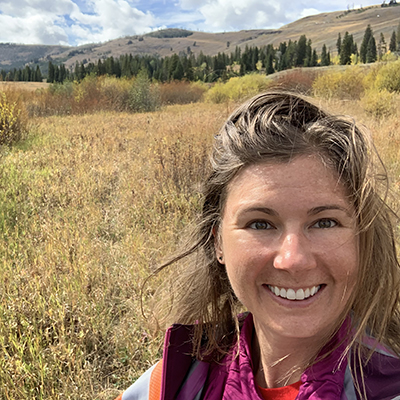
Abstract
Elemental cycling is fundamental to life and provides insight into ecosystem condition and function. We have long known that the cycles of elements, both nutrients and toxic elements, are intimately linked, not only to other elements and their biogeochemical cycles, but to important ecosystem processes like metabolism. My research uses the relative availability of nutrients (including carbon, nitrogen and phosphorus) as well as their interactions with toxic elements (like arsenic) to explore questions about the uptake, storage, and transport of elements as well as the general function of streams and stream food webs. In this seminar, I will share results from my research on why climate regime matters for stream nutrient cycling and how relative availability of nitrogen and phosphorus can drive arsenic retention. I will also talk about the interaction between terrestrial predator, browser, and vegetation dynamics in Yellowstone National Park impact stream ecosystem functioning.
Speaker's Bio
I am a faculty member in the School of Natural Resources. I am an aquatic ecologist interested in how elements move through streams, how they affect each other and how they are taken up and used by aquatic organisms. I explore the interaction between trace and common elements and the implications for ecosystem functioning. This research has taken me to many beautiful places, including northern California, Trinidad, Norway, the Colorado Rocky Mountains, the Ecuadorian Andes, and Yellowstone National Park.
At UNL, I have been working with Dr. Jess Corman and Dr. Steve Thomas on the StreamNet project, which is based in the Scottsbluff area and explores the effects of land use (e.g. CAFOs, row cropping, urban influence) on water quality. Another key water issue in Nebraska is the use of antibiotics in animal production and the application of antibiotic-containing animal waste to row crops. Dr. Thomas and I are collaborating on a project gathering baseline data on how these practices affect the concentration of antibiotics in Nebraska’s freshwaters. I am also interested in exploring how fertilization practices affect the retention and transport of toxic elements like arsenic.
Speaker's Contact Information
- kmacneill2@unl.edu
Video
Manhandling mallards: The conservation paradox of feral populations and the meaning of wild
Main Speaker: Philip Lavretsky
Associate Professor , Biological Sciences | University of Texas at El Paso
Date: 11/16/2022
Time: 3:30 PM
Location: 107 South (Auditorium) Hardin Hall

Abstract
An increasing human footprint is forcing scientists to re-evaluate the value systems of general conservation biology. In addition to climate- and human-induced ecological changes, the translocation of individuals around the world is leading to rising incidences of anthropogenic hybridization, particularly between domestic and wild congeners. Applying a landscape genomics approach for thousands of samples across continental and island mallard populations, we establish that a single domestic game-farm mallard breed is the source for contemporary release programs in Eurasia and North America, as well as for established feral populations in New Zealand and Hawaii. In particular, central Europe and eastern North America were identified as epicenters of ongoing anthropogenic hybridization, demonstrating how the continued releases of millions of game-farm mallards are affecting the genetic integrity of wild mallards. Furthermore, Holarctic wild populations and self-sustaining feral populations in New Zealand show signatures of local adaptation. Together, these results demonstrate that ’wild’ is not singular, and that even feral populations are capable of quickly responding and adapting to natural processes.
Speaker's Bio
My interest lies in bridging the gap between evolutionary and wildlife genetics as an informative means for conservation and management efforts. Specifically, I believe that our ability to identify and understand what species, population, etc. are in regards to adaptive and non-adaptive traits is essential when attempting to establish potential plans. In addition to conservation implications, I am interested in understanding the underlying evolutionary drivers impacting genomes as a means to understand the primary drivers of speciation, particularly at the earliest stages of divergence. While my primary study system has been the mallard complex, I work across a variety of taxa and questions.
Speaker's Contact Information
- plavretsky@utep.edu
Video
Small, forested headwater streams and their riparia: are forest managers and ecologists ready for climate change?
Main Speaker: Leon Barmuta
Freshwater Ecologist , School of Natural Sciences | University of Tasmania
Date: 11/18/2022
Time: 3:30 PM
Location: 901 South Hardin Hall
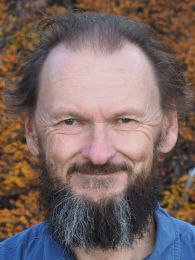
Abstract
Small headwater streams comprise as much as 40% of the catchment area of river basins, and are important for aquatic biodiversity, ecosystem processes and services. To mitigate changes in forest management, stream ecologists have obsessed about riparian protection, while hydrologists have obsessed about water yield and geomorphologists obsessed about managing source areas to minimise erosion. Meaningful connections between these disciplines have been difficult to forge and maintain thus hampering managers’ abilities to develop “joined-up” responses to changes in forest management. Perversely, the challenges presented by climate change might provoke more meaningful collaboration. In lutruwita/Tasmania, global heating won’t result in uniform drying of streams across the island. All models suggest strong regional differences in changes to precipitation. Some catchments may transition from permanent to intermittent streams while others will experience more frequent and intense high-flows. Accordingly, managers and researchers will need to modify the ‘one-size-fits-all’ set of prescriptions embodied in the current Forest Practices Code. However, our greatest ignorance is about the aquatic impacts of changes in fire regimes. Even if pre-European fire regimes were re-established, we face more frequent and intense fire seasons. Accordingly, I hope to use part of my Fulbright time here at KSU to break out of my forest silo and interact with stream and catchment researchers who work outside the forestry bubble and look forward to sharing hopes and fears for the ecology of small, headwater streams in the coming decades.Speaker's Bio
I am currently Associate Professor in Biological Sciences at the University of Tasmania and lead research programs in freshwater biodiversity, biological assessment of freshwaters and the limnology of shallow lakes. I am the Kansas State University Fulbright Scholar for 2020-2 (postponed until 2022). In 2013 I was awarded the Gold Medal of the Australian Society for Limnology and a National Citation for outstanding teaching from the Australian Government. I have close industry links with the water, forestry and primary industry sectors and am part of two major international research collaborations on biodiversity and ecosystem processes in freshwater streams.Speaker's Contact Information
- Leon.Barmuta@utas.edu.au
Video
Motivational Typologies of Foragers in North Central US
Main Speaker: Iris McFarlin
Communication Specialist , Applied Wildlife Ecology and Spatial Movement Lab (AWESM) | School of Natural Resources | University of Nebraska-Lincoln
Date: 11/29/2022
Time: 2:00 PM
Location: Zoom Webinar (Check with Andy Little, alittle6@unl.edu for information)
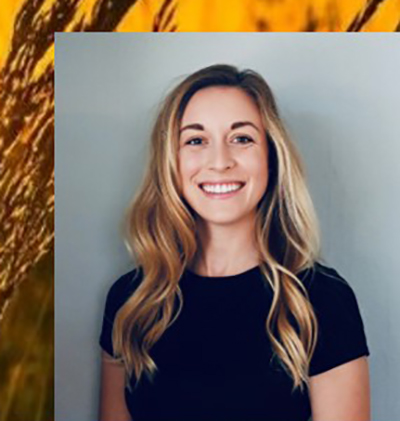
Abstract

Video
Regenerative Agriculture: For Habitats Both Large and Small
Main Speaker: Keith Berns
Co-Owner/Sales and Marketing Manager , Green Cover Seed
Date: 12/13/2022
Time: 2:00 PM
Location: Zoom Webinar (Check with Andy Little, alittle6@unl.edu for information)
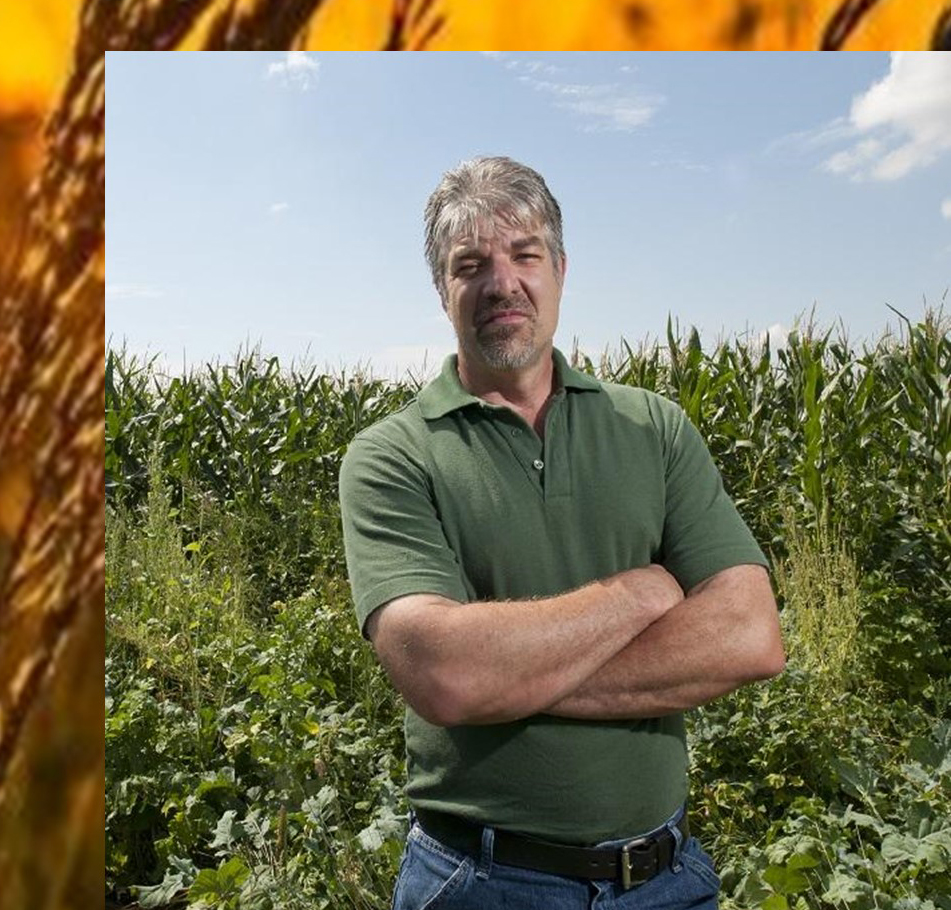
Abstract

Video
Graduate Student Seminar Series
Main Speaker: Shabani Muller
PhD Candidate in Natural Resources Sciences
Date: 3/8/2023
Time: 12:00 PM
Location: 163 North Hardin Hall
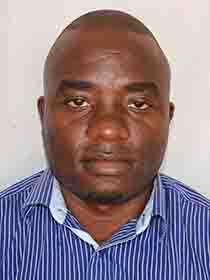
Abstract
Research proposal: Characterization of Toxoplasma gondii genotypes in shellfish, goats, and chickens in coastal Tanzania. Toxoplasmosis is a significant risk to public health in Tanzania, where HIV is also a primary concern. The genetic characteristics and key routes of transmission of Toxoplasma gondii have not been studied in the human-animal-environment interface in this part of East Africa. The study aims to understand the risk of food-borne infection in the area by sampling shellfish, goats, and chickens from markets and screening them for the presence of T. gondii oocysts or bradyzoite cysts using molecular assays. We hypothesize that strain diversity differs in shellfish and domestic animals from environments with different land-use and felid populations. This study will provide the first genetic data for T. gondii strains circulating in Tanzanian hosts and environments, building a foundation for understanding human health through future One Health studiesGraduate Student Seminar Series
Main Speaker: Katie Campbell & Grace Campbell
Date: 3/22/2023
Time: 12:00 PM
Location: 163 North Hardin Hall
Abstract
Katie Campbell
Investigating the physiological, physical, social, behavioral, and environmental factors that influence semen quality in African elephants.
Grace Campbell
The Last Drought Frontier: Building a Drought Index for the State of Alaska
Drought is characterized by periods of below average precipitation. There are five major types of drought recognized in the literature: meteorological, hydrological, agricultural, socioeconomic, and ecological. A relatively new concept in the drought literature is “snow drought.” A key part of the definition of drought is that it is not always accompanied by extreme heat. This means drought can occur even in cold climates, cold seasons, and higher latitudes and altitudes, like Alaska. Drought is a natural part of climate variability, but Alaska’s climate is changing faster than any other state in the United States. Alaska is no stranger to dry periods; prolonged dry periods have occurred in the 1950’s, 1970’s, 1990’s, and most recently from 2016-2019. However, the frequency, duration, and intensity of drought is changing due to global climate change. There have been many impacts to Alaska hydrology, forestry, and agriculture due to drought, so the purpose of this study is to enhance the understanding of drought in Alaska by identifying and using regionally appropriate climate information to create a comprehensive picture of drought in Alaska while capturing its unique characteristics. The principal components analysis (PCA) approach was used to integrate 17 individual drought indicators and indices to identify their relative contribution on a climate division basis. Those results were then used to create a composite drought index (CDI) for the state of Alaska.
Graduate Student Seminar Series
Main Speaker: Sophia Becker and Daniel Gschwentner
PhD Candidates in Natural Resources Sciences
Date: 4/5/2023
Time: 12:00 PM
Location: 163 North Hardin Hall
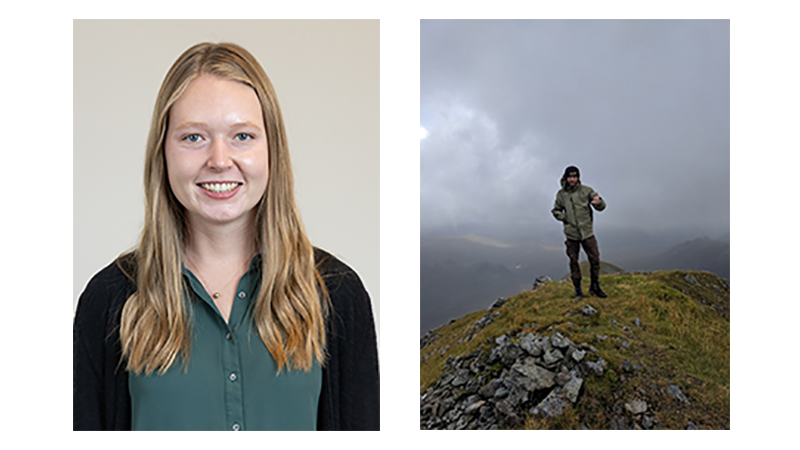
Abstract
Sophia Becker Theoretical vs experimental relationship between K-40 counts and gravimetric water content at a well instrumented agricultural research station in Nebraska, USA.
Detection of gamma-rays emitted by K-40 decay demonstrates potential for reliable soil moisture estimation for agricultural and hydrological applications. With a circular footprint of roughly 20 m radius, gamma-ray spectroscopy (GRS) provides a continuous, non-invasive average measurement that fills the scale gap between point and satellite data. GRS sensors have also been successfully integrated with Unmanned Aerial Systems opening the potential for soil moisture mapping. Current theoretical models of gamma-ray spectra and soil moisture have not been extensively tested with empirical data. An existing soil moisture model for NaI gamma-ray spectra includes a method for biomass water content correction and was tested with five sampling campaigns in a tomato field, while another soil moisture model was tested with a single sampling campaign in a sugar beet field using CsI gamma-ray spectra. We hypothesize that testing existing theoretical models with thorough empirical data over a range of soil moisture and vegetative conditions will increase our understanding of the relationship between gamma-ray spectra, soil moisture, and biomass, and will allow us to validate and/or improve the soil moisture calibration function.
In this study we conduct a robust calibration of a stationary CsI gamma-ray soil moisture sensor (gSMS, Medusa Radiometrics) against gravimetric water content samples at a long term agricultural experimental field in eastern Nebraska, United States. Additional measurements include an Eddy Covariance tower, a Cosmic-Ray Neutron Sensor, in-situ soil moisture sensors, and destructive vegetation sampling every 10 days during the growing season. In total, 18 sampling campaigns were conducted between June 2021 and October 2022 under bare soil, maize, and soybean conditions. Soil samples were collected in a radial pattern at 0, 2, 5, and 12 m from the sensor, every 60 degrees following the expected spatial sensitivity of the gSMS. Samples from the 19 locations surrounding the sensor were aggregated in 5 cm intervals from 0 to 35 cm depth. Both a depth-weighting function and the arithmetic mean were used to calculate the average gravimetric water content within the sensing volume.
We then leverage the relatively large experimental data set of gravimetric water content and K-40 counts to test current theoretical approaches to soil moisture estimation with GRS. Data from both bare soil and vegetated conditions allow us to investigate and potentially remove the biomass water content signal from the soil moisture estimation. Comparison with the existing theoretical calibration functions shows large deviations with the empirical data. Cosmic-ray Neutron Sensor data recorded at the site shows a high degree of correlation (R > 0.7 for hourly data) between the K-40 counts and neutron counts under changing biomass conditions. Lastly, comparison of the GRS derived soil moisture data with the in-situ soil moisture sensors, rainfall, and evapotranspiration result in good correspondence with soil moisture state and water fluxes at the study site.
Daniel Gschwentner
Nutrient limitation in chemically diverse lakes in the Nebraska Sandhills.
Nutrient limitation of four lakes in the Nebraska Sandhills was investigating using bioassays. Lakes differed widely in their baseline chemistry and response to nutrient additions. N, P and NP-co-limitation were observed although patterns of nutrient limitation varied in time and space.
Graduate Student Seminar Series
Main Speaker: Catherine Chan and Uc he Ogbenna
PhD Candidates in Natural Resources Sciences
Date: 4/19/2023
Time: 12:00 PM
Location: 163 North Hardin Hall
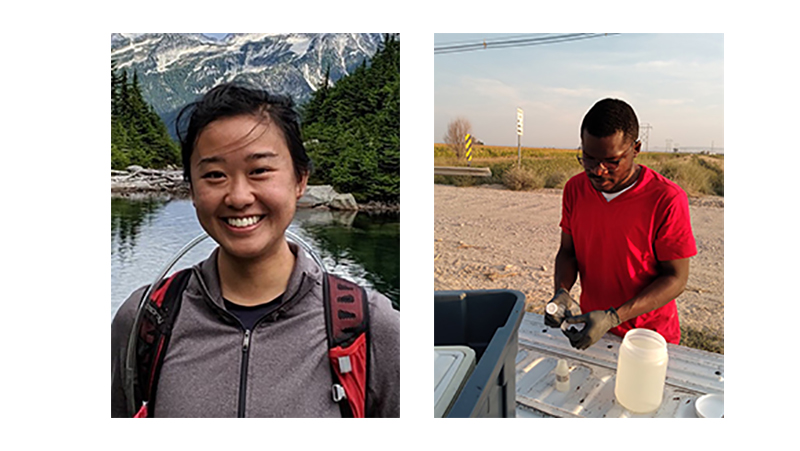
Abstract
Catherine Chan
Influence of spatial scale on estimating biodiversity through remote sensing.
Quantifying biological diversity using remote sensing has shown potential in large spatial scale estimations. One such remote sensing technique is spectral diversity, or the variation among spectra, which has been related to environmental characteristics such as species richness. The spatial scale however heavily influences this trend, particularly in how a scale or community is defined. This study seeks to preliminarily discern differences and possible causes for these trends by manipulating the scale, or community extent and definition. Understanding the relationship drivers between biodiversity and spectral variation can inform better quantification methods using remote sensing.
Uc he Ogbenna
How do flow regimes affect nutrient retention in reservoirs.
One of the main global environmental challenges is the management of nutrient contamination. The transition into the Anthropocene, a geologic epoch dominated by human activities such as urbanization and agriculture calls for the development of adaptive ways to manage our ecosystems. In recent times, reservoirs have become an integral part of human-dominated landscapes and have shown the potential to retain nutrients such as nitrogen (N) and phosphorus (P). Nutrient retention in reservoirs is driven by different processes such as sedimentation, denitrification and metabolism. These processes influence the absolute and relative concentration of essential nutrients delivered downstream. However, flow and its variations strongly control these processes. Flows in and out of reservoirs are often a function of catchment characteristics and reservoir operation. Given that the management goals of reservoirs do not always include ecosystem functions like nutrient retention, integrating nutrient retention into reservoir management goals will require an understanding of how flow regimes as influenced by reservoir operations affect the availability and balance of nutrients in and out of the reservoirs. In this study, we plan to analyze reservoir flow data to understand their patterns over time and how these drive the relative and absolute concentrations of nitrogen and phosphorus in reservoirs within catchments of varying dominant land uses.
Graduate Student Seminar Series
Main Speaker: Anum Khushal
PhD Candidate in Natural Resources Sciences
Date: 4/26/2023
Time: 12:00 PM
Location: 163 North Hardin Hall
Abstract
Characterizing Learning Environment for Quantitative Reasoning Skills in Undergraduate Biology
National calls have emphasized the inclusion of quantitative reasoning (QR) such as data and figure interpretation and mathematical and computational modeling in teaching STEM discipline. We aim to characterize the learning environments whereby instructors incorporate QR in undergraduate biology instruction based on qualitative and quantitative data about instructor intentions, QR implementation and student performance in QR skills. We hypothesize that instructors create learning environments that are conducive to different QR types including quantitative interpretations (predicting, translating models), quantitative modeling (mathematical conceptualization, creating, refining models) and meta modeling (model-based reasoning). Eighteen instructors teaching life science courses at US institutions submitted videos of themselves teaching QR in biology. The video recordings were analyzed using the Quantitative Modeling Observation Protocol a validated interdisciplinary teaching observation protocol. Student performance was measured using an assessment of quantitative modeling skills. A semi-structured interview was conducted with each instructor to explore their pedagogical content knowledge at the interface of math and biology and the instructor intentional integration of quantitative reasoning in life science courses. Collectively, the observed teaching, instructor intentions, and student performance data will facilitate triangulation on learning environments created to include QR in classroom. Preliminary work has led to two broad profiles, learning environments that emphasize quantitative interpretation of figures and data tables and learning environments that additionally emphasize model creation, revision, and application. For instructors seeking to include QR into biology or other STEM discipline classroom this work will highlight pedagogy that creates innovative, QR-focused learning environments.
Graduate Student Seminar Series
Main Speaker: Megan Baldissara
PhD Candidate in Natural Resources Sciences
Date: 5/3/2023
Time: 12:00 PM
Location: 163 North Hardin Hall
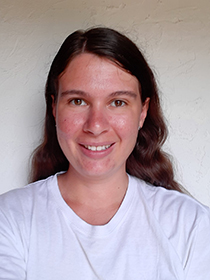
Abstract
Identifying and Prioritizing Habitat for Pheasant Conservation and Management in Agriculturally Dominated Landscapes
Agricultural intensification poses a great threat to biodiversity with globally 51% of vulnerable and concerned species being threatened by it. Despite agricultural intensification being so threatening to wildlife, there is limited knowledge on the best practices to restore habitats in agriculturally dominated landscapes. This is due to the limited monetary resources in conservation countered by a significant expense for habitat restoration. To understand how to restore such habitats efficiently and cost-effectively, wildlife-habitat relationships need to be understood which are scale-dependent. Studies tend to research these relationships on non-standardized scales, making comparison analysis harder and causing little understanding on the topic Remote sensing can quickly gather habitat information at no cost at different scales in a standardized manner to study habitat relation with wildlife. Pheasants are charismatic, and economically and culturally important species impacted by agricultural intensification – studying their habitat relationship using remote sensing will aid understanding of habitat restoration in agriculturally dominated landscapes. The thesis will be centered in Nebraska. This state historically majorly consisted of grassland but has undergone drastic change, being fragmented, and converted into agricultural land. Before such change, pheasants were doing well in the landscape. I will outline how I will research pheasant conservation in agricultural landscapes in my chapters being: 1) Literature review of pheasant habitat data source and scale knowledge and gaps; 2)Grassland disturbance classification with field data and remote sensing; 3) GIS model for habitat prioritization that can integrate change in the landscape.
Dams and drought: how Lake Powell and the southwest mega-drought have fundamentally altered downstream nutrient dynamics
Main Speaker: Bridget Deemer
Research Ecologist , US Geological Survey Southwest Biological Science Center
Date: 5/5/2023
Time: 10:30 AM
Location: 901 South Hardin Hall

Abstract
Rivers below dams often experience seasonal or persistent reductions in phosphorus (P) inputs due to phosphorus retention in reservoirs. Lake Powell, a large water storage reservoir on the Colorado River, retains the vast majority (95-99%) of the phosphorus that it receives. This creates phosphorus limiting conditions downstream throughout the year. Long-term data from an adaptive management program show how declines in phosphorus releases from Lake Powell can lead to major collapse in the tailwater rainbow trout population. The bio-availability of phosphorus in this ecosystem is largely controlled by calcium carbonate biogeochemistry, where ecologically meaningful reductions in sediment phosphorus release can occur when river pH increases by one unit (from 7 to 8). As reservoir levels go down, as is happening in the Southwest’s current drought conditions, water is beginning to be withdrawn from Lake Powell’s surface waters, where photosynthesis drives pH up. This, combined with empirical observations of the vertical distribution of soluble reactive phosphorus in the water column, suggests that phosphorus bioavailability downstream of the reservoir will decline as lake levels drop. Thus, declining reservoir water levels may further exacerbate food limitation in the Colorado River below Glen Canyon Dam, with critical implications for fish and invertebrate populations.
Speaker's Bio
Bridget Deemer is a research ecologist at the U.S. Geological Survey’s Grand Canyon Monitoring and Research Center where she leads a long-term water quality monitoring program on Lake Powell. Her research informs the Glen Canyon Dam Adaptive Management Program. Bridget is also passionate about understanding the role of artificial reservoirs in the global carbon balance. A major theme of her work examines how dam and reservoir management affects water quality, ecosystem productivity and greenhouse gas emissions. She is interested in identifying reservoir management win-wins as well as trade-offs, which is critical as the quantity and quality of water becomes increasingly variable under a changing climate.
Social Media
Twitter: @BridgetDeemer | Twitter- @USGSAZ
Video